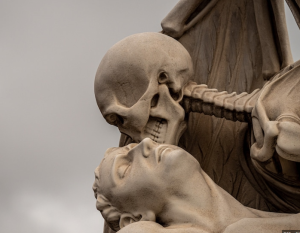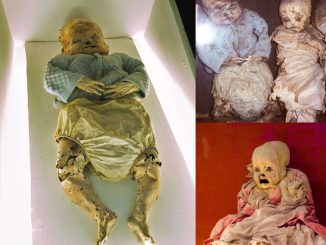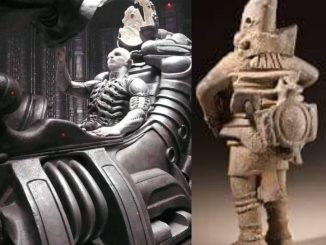A Monument to Mortality
In the serene environs of Poblenou Cemetery in Barcelona, stands a sculpture that captivates and unnerves in equal measure. The Kiss of Death, a marble masterpiece crafted in 1930, is a profound representation of death’s inevitability and the intimate finality it brings. This piece of art, depicting a winged skeleton kissing the forehead of a young man, evokes a spectrum of emotions and interpretations, inviting onlookers into a deep reflection on life, death, and what lies beyond.
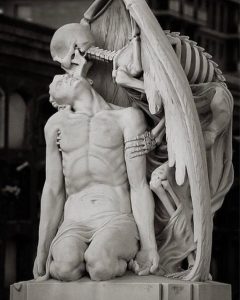
The Sculpture’s Symbolic Resonance
The Kiss of Death is not merely a sculpture but a powerful symbol that bridges the tangible and the ethereal, the mortal and the immortal. The juxtaposition of a skeletal figure, traditionally seen as the harbinger of death, engaging in an act as intimate and tender as a kiss, challenges conventional perceptions of death as something to fear. Instead, it suggests a reconciliation with death, portraying it as a natural progression of life’s journey.
The detailed images provided allow us to appreciate the intricate workmanship of the sculpture—the delicate balance of the figures, the detailed feathers on the wings of death, and the serene acceptance on the young man’s face. Each element has been carved with such precision that the marble seems to transcend its solidity, inviting a contemplation of the ethereal aspects of existence.
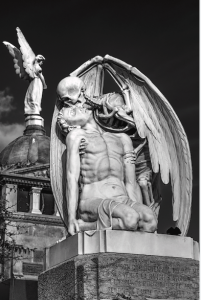
A Testament to Artistic Brilliance
The Kiss of Death was created in 1930, a time of significant artistic experimentation and expression. Its presence in Poblenou Cemetery, a resting place filled with remarkable funerary art, highlights the cemetery’s role not only as a space for mourning but also as a haven for artistic admiration. The sculpture stands as a testament to the artist’s skill in capturing the complexity of human emotions and the universal experience of death.
This marble sculpture exemplifies how art can serve as a medium for exploring and expressing the most profound themes of human existence. Through the artist’s vision, the sculpture transcends its material form to engage with viewers on a deeply personal level, prompting introspection on the relationship between life and death, love and loss, fear and acceptance.
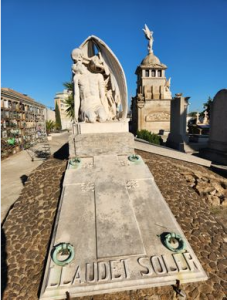
Reflections on Mortality and Beauty
The Kiss of Death holds a mirror to the dual nature of existence, reminding us that in the very heart of mortality, there lies beauty and transformation. This sculpture invites us to perceive death not as an end but as an integral part of life’s continuum, an event that unites all of humanity in its inevitability.
As we view the images of this captivating sculpture, we are encouraged to embrace the transient nature of our existence and to find peace in the knowledge that life and death are but two sides of the same coin. In its silent dialogue with the viewer, The Kiss of Death in Poblenou Cemetery serves as a poignant reminder of our own mortality and the enduring power of art to address the most existential of themes.
In conclusion, The Kiss of Death is more than a marble sculpture; it is a philosophical inquiry into the nature of existence, beautifully rendered in stone. Located in the tranquil Poblenou Cemetery of Barcelona, it stands as a bold exploration of mortality, a source of contemplation for visitors, and a highlight of funerary art. Through its timeless beauty and deep symbolism, it continues to inspire and provoke, bridging the gap between the living and the eternal silence of death.
As we explore images of this striking sculpture and delve into the ancient discoveries that inform our comprehension of life’s final passage, we are reminded of the beauty that can be found in acceptance, the peace that comes with understanding, and the universal nature of our journey towards the inevitable. “The Kiss of Death” is more than a sculpture; it is a dialogue with eternity, a reminder of the cycle of life and death that binds us all, and an invitation to view the end not with fear, but with curiosity and openness.
